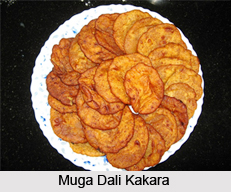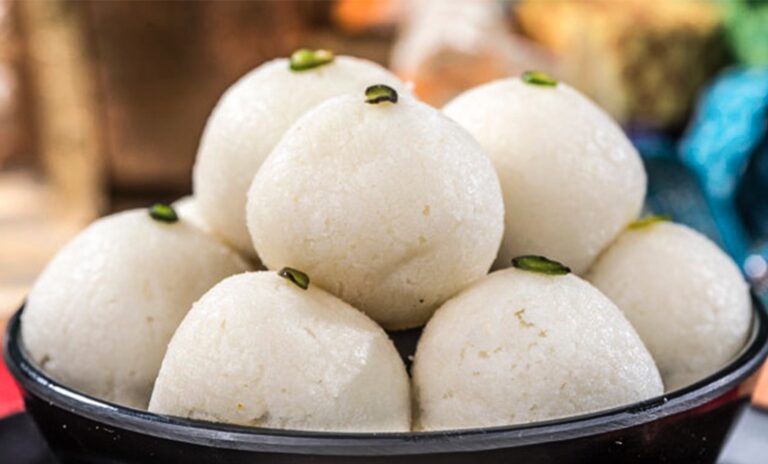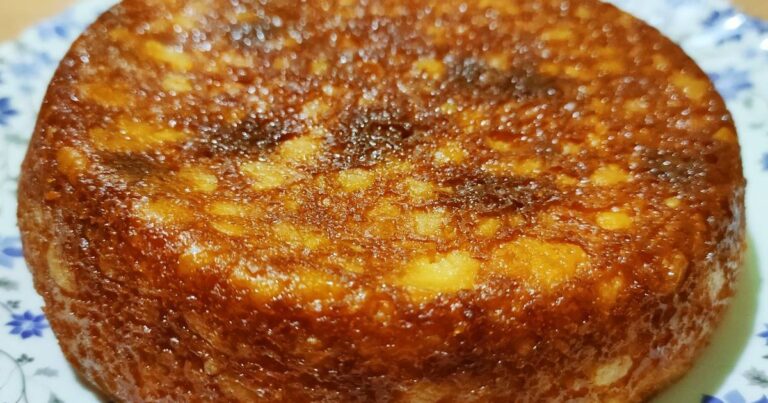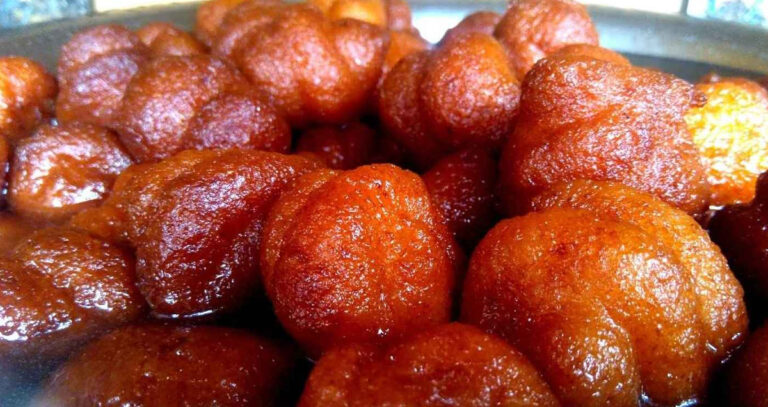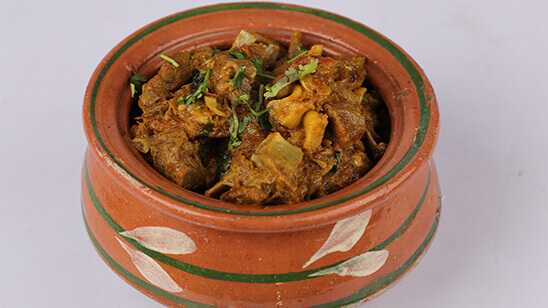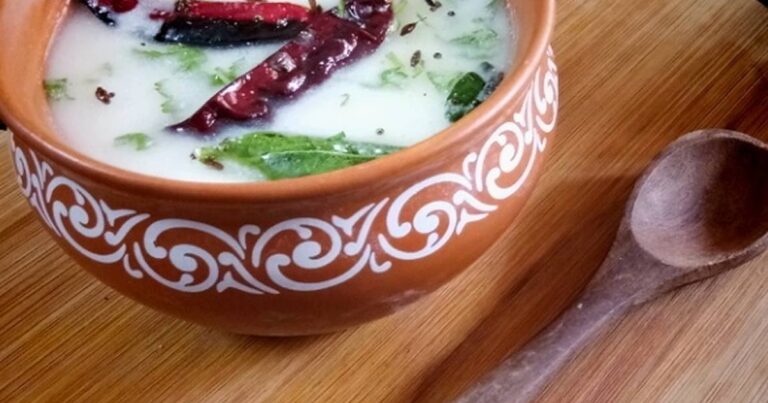Bamboo Mutton(special delicious Mutton with Bamboo Shoots)
Bamboo Mutton is a unique and delicious dish where mutton (goat meat) is cooked with bamboo shoots, imparting a distinct flavor and texture to the dish.

History
Bamboo Mutton is a unique dish that originates from the northeastern region of India, particularly in states like Odisha, Nagaland, Mizoram, and Manipur. It is a traditional recipe that reflects the culinary heritage of the indigenous tribes in these areas.
The history of Bamboo Mutton can be traced back to the tribal communities that inhabit these regions. Bamboo, abundantly available in hilly terrains, is not only used for construction but also plays a significant role in their culinary practices.
The technique of cooking mutton inside bamboo stems has been passed down through generations. The use of bamboo imparts a distinct flavor to the dish and allows for slow and even cooking, resulting in tender and flavorful meat.
In the preparation of Bamboo Mutton, the bamboo stems are carefully selected, cleaned, and soaked in water to remove any impurities. The mutton, along with spices, herbs, and vegetables, is then stuffed into the bamboo stems. The ends of the bamboo are sealed with leaves or clay, creating a natural cooking vessel.
Traditionally, the bamboo-stuffed mutton is cooked over an open fire or hot charcoal, allowing the flavors to infuse and the meat to cook slowly. The unique combination of the bamboo’s aroma, along with the spices and ingredients, gives Bamboo Mutton its distinctive taste.
Bamboo Mutton is not only a delicious dish but also holds cultural significance among the tribal communities. It is often prepared during festivals, weddings, and other special occasions, showcasing the rich culinary traditions and the close connection between nature and food.
In recent years, Bamboo Mutton has gained popularity beyond the northeastern region of India, with more people exploring and appreciating its unique flavors. It has become a sought-after delicacy in some restaurants, offering a taste of the rich tribal cuisine and celebrating the heritage of the indigenous communities.

Here’s a recipe for Bamboo Mutton:
Ingredients:
- 500 grams mutton, cut into pieces
- 1 cup bamboo shoots, sliced
- 2 onions, finely chopped
- 2 tomatoes, pureed
- 2 tablespoons ginger-garlic paste
- 1 teaspoon turmeric powder
- 2 teaspoons red chili powder
- 1 teaspoon coriander powder
- 1 teaspoon cumin powder
- 1 teaspoon garam masala powder
- 1 cup yogurt, whisked
- 2 tablespoons oil or ghee (clarified butter)
- Salt to taste
- Fresh coriander leaves, for garnishing
Preparation:
- Heat oil or ghee in a pan or pressure cooker.
- Add the chopped onions and sauté until they turn golden brown.
- Add the ginger-garlic paste and cook for a minute until the raw smell disappears.
- Add the mutton pieces to the pan and cook until they are browned on all sides.
- Add the tomato puree and cook for a few minutes until the oil separates from the masala.
- In a bowl, mix together the turmeric powder, red chili powder, coriander powder, cumin powder, and salt. Add this spice mixture to the pan and mix well.
- Lower the heat and add the whisked yogurt to the pan. Stir well to coat the mutton with the yogurt and spices.
- If using a pressure cooker, add a little water, close the lid, and pressure cook for about 20-25 minutes or until the mutton is tender. If using a regular pan, add water, cover, and simmer on low heat until the mutton is cooked and tender (approximately 1 to 1.5 hours).
- Once the mutton is cooked, add the sliced bamboo shoots to the pan and mix well.
- Cook for an additional 10-15 minutes, allowing the flavors to blend and the bamboo shoots to soften.
- Sprinkle garam masala powder and give it a final mix.
- Garnish with fresh coriander leaves.
- Serve hot with rice or naan.
Note: Bamboo shoots can be found fresh, canned, or frozen. If using fresh bamboo shoots, make sure to boil them separately for about 15 minutes to remove any bitterness before adding them to the dish. Adjust the spices and ingredients according to your taste preferences.
Expert Tips
Here are some expert tips to enhance your Bamboo Mutton recipe:
- Choose fresh and tender bamboo shoots: If you’re using fresh bamboo shoots, make sure to select young and tender shoots. They will have a more delicate texture and milder flavor. If you’re using canned or frozen bamboo shoots, ensure they are of good quality and properly drained and rinsed before using.
- Prepare bamboo shoots properly: If you’re using fresh bamboo shoots, they often have a bitter taste. To remove the bitterness, boil them in water for about 15-20 minutes, changing the water a couple of times. This process helps tenderize the shoots and makes them ready for cooking. After boiling, drain and rinse the bamboo shoots before adding them to the dish.
- Marinate the mutton: To enhance the flavor and tenderness of the mutton, consider marinating it before cooking. Prepare a marinade with yogurt, ginger-garlic paste, and spices of your choice. Allow the mutton to marinate for at least 1-2 hours or overnight in the refrigerator for better results.
- Slow cook for tender meat: Mutton generally requires slow cooking to become tender and flavorful. If using a pressure cooker, cook on medium heat for around 20-25 minutes after reaching full pressure. If using a regular pan, simmer on low heat for 1 to 1.5 hours or until the mutton is tender. The slow cooking process allows the flavors to develop and ensures the meat is cooked to perfection.
- Add bamboo shoots towards the end: Bamboo shoots don’t require as much cooking time as mutton. To maintain their texture and freshness, add the bamboo shoots to the dish during the final 10-15 minutes of cooking. This way, they will be cooked enough to blend with the flavors but still retain some crunch.
- Adjust seasoning and spices: Taste the dish before adding the bamboo shoots and adjust the seasoning if needed. You can add more spices, such as red chili powder or garam masala, to suit your taste preferences. Remember to balance the flavors and adjust the spice level accordingly.
- Rest before serving: Like many meat-based dishes, it’s a good idea to allow Bamboo Mutton to rest for a few minutes before serving. This resting time helps the flavors to meld together and ensures the meat is tender and juicy.
Remember to experiment, adapt, and make the recipe your own by incorporating your favorite spices and techniques.
Preparation Time
he cooking time for Bamboo Mutton can vary depending on the cooking method and the tenderness of the mutton. Here are the approximate cooking times for Bamboo Mutton:
- Pressure Cooker: If using a pressure cooker, after adding the mutton and other ingredients, close the lid and cook on medium-high heat until the pressure builds up. Once the pressure is reached, reduce the heat to low and cook for about 20-25 minutes. This should be sufficient to cook the mutton and tenderize it.
- Stovetop Cooking: If cooking on the stovetop in a regular pan, the cooking time will be longer. After adding the mutton and other ingredients, cover the pan and simmer on low heat for approximately 1 to 1.5 hours. Check the tenderness of the mutton occasionally to ensure it is cooked to your desired level of tenderness.
Keep in mind that the exact cooking time can vary depending on factors such as the size of the mutton pieces and the heat intensity. It’s important to cook the mutton until it is tender and easily falls off the bone.
Additionally, if you are using fresh bamboo shoots, the cooking time for them will depend on their thickness and tenderness. Generally, bamboo shoots may take an additional 10-15 minutes to cook and soften after adding them to the dish.
It’s always recommended to check the doneness of the mutton and bamboo shoots by testing their tenderness before serving. Adjust the cooking time as needed to achieve the desired texture and flavor.
Serving Procedure
When serving Bamboo Mutton, you can follow these steps:
- Transfer the cooked Bamboo Mutton to a serving dish or a large plate.
- Garnish the dish with fresh coriander leaves for added freshness and visual appeal.
- Bamboo Mutton pairs well with steamed rice or Indian bread like naan or roti. You can serve it with a side of plain rice or flavored rice dishes like pulao or biryani.
- Place the rice or bread on individual plates or a serving platter.
- Spoon the Bamboo Mutton over the rice or serve it alongside the bread.
- Serve the dish hot and enjoy the flavors and aromas of the Bamboo Mutton.
- You can also accompany the meal with some cooling yogurt raita or a side salad to balance the spices.
- Provide serving spoons or tongs to allow guests to serve themselves.
Remember to adjust the serving size and portions based on the number of people you are serving. If you prefer, you can also add some additional garnishes like a sprinkle of garam masala or a drizzle of lemon juice for extra flavor.
Nutritional Value
The nutritional value of Bamboo Mutton can be estimated based on the individual ingredients used in the recipe. Here’s a breakdown of the general nutritional components:
- Protein: Mutton is a good source of protein, which is essential for muscle growth and repair. A 100-gram serving of cooked mutton provides around 25-30 grams of protein.
- Fat: Mutton contains varying amounts of fat, including saturated fat. The exact amount can depend on factors such as the cut of meat and trimming. A 100-gram serving of cooked mutton typically contains around 15-25 grams of fat.
- Carbohydrates: The carbohydrate content in Bamboo Mutton is relatively low, as mutton itself is primarily a source of protein and fat. However, the addition of ingredients like onions, tomatoes, and yogurt may contribute a small amount of carbohydrates.
- Fiber: Bamboo shoots are a good source of dietary fiber, which aids in digestion and promotes a healthy gut. They can provide around 2-3 grams of fiber per 100-gram serving.
- Vitamins and Minerals: Bamboo shoots contain various vitamins and minerals, including vitamin C, vitamin E, potassium, manganese, and zinc. Mutton also provides vitamins such as vitamin B12, niacin, riboflavin, and minerals like iron, zinc, selenium, and phosphorus.
- Calories: The calorie content of Bamboo Mutton can vary based on the specific recipe and cooking method. On average, a 100-gram serving of cooked mutton provides around 200-250 calories, while bamboo shoots contribute around 20-30 calories per 100-gram serving.
It’s important to note that the nutritional values mentioned here are approximate and can vary depending on the specific ingredients and cooking techniques used in your Bamboo Mutton recipe.
Recipe Video
FAQ
Can we eat bamboo shoots with meat?
They’re so versatile because you can use any combination of protein and vegetables that you like. This bamboo shoots and beef stir fry, or măng xào thịt bò, is a family favorite. I love the fresh, earthy flavor of bamboo shoots.
Do Indians eat bamboo shoots?
The dried shoots are used in curries of roasted fish, mutton. In Nagaland, Odisha India, bamboo shoots are both cooked and eaten as a fresh food item or fermented for a variety of culinary uses. Fermented bamboo shoot is commonly known as bas tenga.
Is bamboo shoot high in uric acid?
Studies suggest that the consumption of bamboo shoots may lead to increased uric acid levels.

